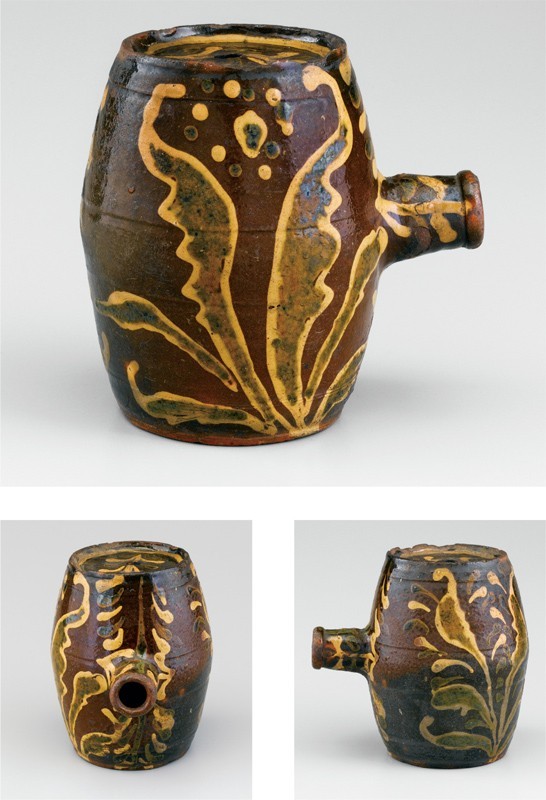
Front and side views of a barrel, Alamance County, North Carolina, 1790–1820. Lead-glazed earthenware. H. 6 1/2". (Private collection; unless otherwise noted, photos by Gavin Ashworth.)

Dish, Alamance County, North Carolina, 1790–1820. Lead-glazed earthenware. D. 15 1/4". (Courtesy, Old Salem Museums & Gardens.)
The 2009 and 2010 issues of Ceramics in America have shown that North Carolina’s earthenware tradition was far more diverse than previously thought. Before the publication of those volumes, the slip-decorated barrel illustrated in figure 1 would have been ascribed, with great confidence, to Moravian potters, whose primary production sites were Bethabara and Salem. Indeed, a dish that may be by the same hand (fig. 2) was formerly attributed to Rudolph Christ, who served as master of the Bethabara pottery from 1786 to 1789 and master of the Salem pottery from 1789 to 1821.[1] Recent research indicates that these objects are part of a subgroup from the St. Asaph’s tradition, which flourished in and around southern Alamance County from the mid-eighteenth to the mid-nineteenth century.
The barrel is the only known North Carolina example with slip trailing. Like the dish, it has a brown ground and polychrome designs that range from somewhat naturalistic to abstract. Both objects have leaves with serrated edges that are outlined with yellow slip and filled in with green. The barrel and dish also have motifs accented with jeweling, but the use of dot accents is much more extensive on the latter. The jeweling on the dish seems almost compulsive, running below the lower leaves on the cavetto and on either side of the stem above.
Although the dish and barrel could have had utilitarian functions, it is more likely that they were primarily decorative. If the barrel had been used as a container, it may have held dry goods rather than spirits, as the form would suggest. A smaller, undecorated barrel made in Salem contained pieces of tobacco when found.[2]
John Bivins Jr. attributed the dish to Christ in The Moravian Potters in North Carolina (Chapel Hill: University of North Carolina Press for Old Salem, Inc., 1972), p. 247, fig. 255.
Ibid., p. 122.
